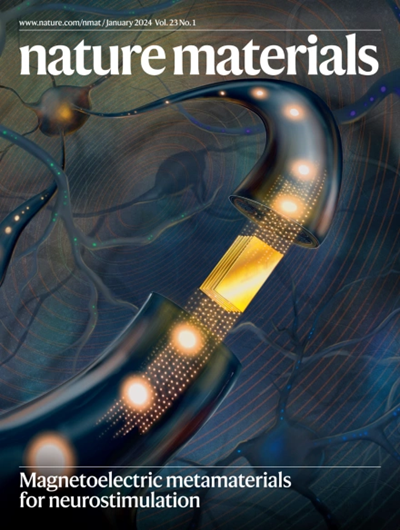Cryogenic nano-imaging of second-order moiré superlattices
IF 37.2
1区 材料科学
Q1 CHEMISTRY, PHYSICAL
引用次数: 0
Abstract
Second-order superlattices form when moiré superlattices with similar periodicities interfere with each other, leading to larger superlattice periodicities. These crystalline structures are engineered using two-dimensional materials such as graphene and hexagonal boron nitride, and the specific alignment plays a crucial role in facilitating correlation-driven topological phases. Signatures of second-order superlattices have been identified in magnetotransport experiments; however, real-space visualization is still lacking. Here we reveal the second-order superlattice in magic-angle twisted bilayer graphene closely aligned with hexagonal boron nitride through electronic transport measurements and cryogenic nanoscale photovoltage measurements and evidenced by long-range periodic photovoltage modulations. Our results show that even minuscule strain and twist-angle variations as small as 0.01° can lead to drastic changes in the second-order superlattice structure. Our real-space observations, therefore, serve as a ‘magnifying glass’ for strain and twist angle and can elucidate the mechanisms responsible for the breaking of spatial symmetries in twisted bilayer graphene. Second-order superlattices emerging in magic-angle twisted bilayer graphene aligned with hexagonal boron nitride are visualized in real space through cryogenic nano-imaging, revealing the impact of strain and twist-angle variations.


二阶摩尔纹超晶格的低温纳米成像
当具有相似周期性的摩尔超晶格相互干扰,导致更大的超晶格周期性时,就会形成二阶超晶格。这些晶体结构是利用石墨烯和六方氮化硼等二维材料设计而成的,特定的排列方式在促进相关驱动的拓扑相位方面起着至关重要的作用。二阶超晶格的特征已在磁传输实验中被识别出来,但仍然缺乏真实空间的可视化。在这里,我们通过电子传输测量和低温纳米级光电压测量,揭示了与六方氮化硼紧密排列的魔角扭曲双层石墨烯中的二阶超晶格,并通过长程周期性光电压调制加以证明。我们的结果表明,即使微小到 0.01°的应变和扭转角变化也会导致二阶超晶格结构发生剧烈变化。因此,我们的实空间观测结果可作为应变和扭转角的 "放大镜",并能阐明导致扭曲双层石墨烯空间对称性破坏的机制。
本文章由计算机程序翻译,如有差异,请以英文原文为准。
求助全文
约1分钟内获得全文
求助全文
来源期刊

Nature Materials
工程技术-材料科学:综合
CiteScore
62.20
自引率
0.70%
发文量
221
审稿时长
3.2 months
期刊介绍:
Nature Materials is a monthly multi-disciplinary journal aimed at bringing together cutting-edge research across the entire spectrum of materials science and engineering. It covers all applied and fundamental aspects of the synthesis/processing, structure/composition, properties, and performance of materials. The journal recognizes that materials research has an increasing impact on classical disciplines such as physics, chemistry, and biology.
Additionally, Nature Materials provides a forum for the development of a common identity among materials scientists and encourages interdisciplinary collaboration. It takes an integrated and balanced approach to all areas of materials research, fostering the exchange of ideas between scientists involved in different disciplines.
Nature Materials is an invaluable resource for scientists in academia and industry who are active in discovering and developing materials and materials-related concepts. It offers engaging and informative papers of exceptional significance and quality, with the aim of influencing the development of society in the future.
 求助内容:
求助内容: 应助结果提醒方式:
应助结果提醒方式:


